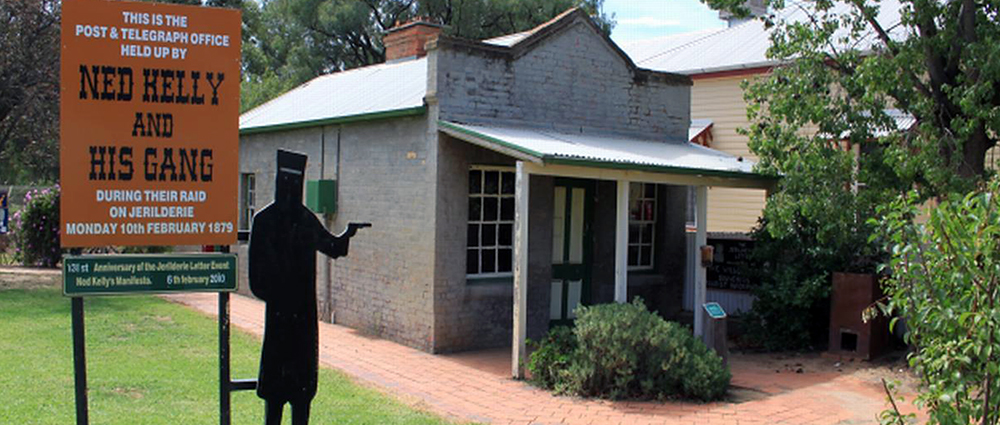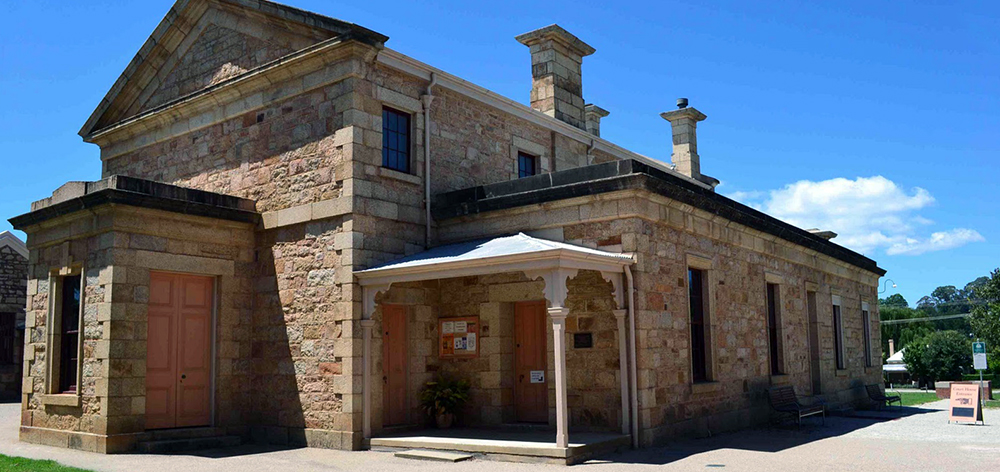94 Ford Street
Beechworth
Victoria 3747
Built in 1858 and in continuous service for one hundred and thirty-one years, the Beechworth Courthouse retains its original furniture and fittings. It has been the setting of some of the most fascinating court cases in Victoria’s history. It was here that Australia’s most famous bushranger, Ned Kelly, was committed to stand trial for murder. Ned made several appearances before the Beechworth Court, as did many of his immediate and extended family and friends. His mother, Ellen, brothers Dan and Jim and Uncle Jim Kelly also faced charges in this courtroom. Elizabeth Scott, the first woman hanged in Victoria, was sentenced to death there. Still, with its original furnishings and fittings, the Court houses the original dock, holding cell, judge’s chair, gavel and witness box, as well as a great collection of memorabilia and history – many other famous names of Australian history had links with the Beechworth Courthouse including the ill-fated explorer, Robert O’Hara Burke, Sir Redmond Barry, a Chief Justice of the Supreme Court of Victoria and the first Australian-born Governor General, Sir Isaac Isaacs. The ill-fated explorer, Robert O’Hara Burke, in his role as Police Superintendent in Beechworth, once sat at the bench. Justices Sir Redmond Barry and Sir William Stawell passed judgement on many a defendant from the Judge’s chair. Sir Isaac Isaacs started his legal career in this building and later became Australia’s first native-born Governor-General.
The State Library of Victoria
328 Swanston Street
Melbourne
Victoria 3000
The State Library of Victoria is the custodian of a rich collection of historical and contemporary Ned Kelly material, which has been acquired and donated over the years. Key historical material includes the Jerilderie letter, Ned Kelly’s armour and death mask, family photographs, police telegrams and photographs, newspaper reports, letters, minutes from the 1880 Royal Commission into the Kelly Outbreak and books written about the bushranger by authors and historians from the 19th century to today. Kelly’s cultural impact from the 19th century onwards is also well represented. Material relating to the 1906, 1970 (starring Mick Jagger) and 2003 (starring Heath Ledger) film versions of Kelly’s story is complemented by Peter Carey’s papers (an archive acquired from the author of the 2001 Booker Prize-winning novel The True History of the Kelly Gang). The Library continues to develop and receive donations and long-term loans of Kelly-related material.
Benalla Costume and Kelly Museum
14 Mair Street
Benalla
Victoria 3672
Ned Kelly’s stained cummerbund is one of the prized possessions of the Benalla Historical Society Inc., which is open 9am to 5pm, 7 days a week. Made of green silk grosgrain, backed with plain weave green woollen fabric, and interfaced with undyed linen, Ned Kelly’s bloodstained cummerbund is one of the prized possessions of the Benalla & District Historical Society. It is 230 cm long, 14 cm wide, and finished at each end with gold-coloured metallic fringing. The story goes that in his childhood, Ned was rewarded with the cummerbund for saving the boy Richard Shelton from drowning in the flooded waters of Hughes Creek in Avenel. Ned wore the cummerbund under his armour during his last stand at Glenrowan. It was collected at Glenrowan on 28th June 1880 by Dr John Nicholson of Benalla, who dressed Ned’s wounds. It remained with his family until being donated to the Benalla Historical Society Inc. in 1973 by his daughter Mrs Emmie McNab.
Ned Kelly's Post Office Jerilderie

11 Powell Street
Jerilderie
New South Wales 2716
We called through the Telegraph Office a few years back and spoke in length to one of the volunteers, who, in between tea and scones, told us about the cutting of the telegraph wires and how one of the operators escaped. He evaded the Gang and swum the creek to reach a nearby homestead that had a direct line to Diniliquin, but the police were too far away to have any impact on the situation. The Jerilderie townsfolk view the Kelly Gang as heroes because, as they say, ‘they only robbed a bank, and we all know banks have been robbing from us ever since’. The gift shop has been selling the Jerilderie letter since the mid-fifties. This refutes the ridiculous claim by the State Library of Victoria that the letter has never been published. A postcard purchased from the shop states, ‘The Kelly Gang, as they were widely known, rode into Jerilderie, a small sheep, wheat and cattle town in the south-west Riverina region of NSW, Australia — the year was 1879. Members of the gang were Ned Kelly, his brother Dan Kelly, Joe Byrne and Steve Hart. They locked up the two policemen, took over the hotel (free drinks on the bushrangers) and bailed up the local bank, taking over two thousand pounds. Communications were cut at the post office which still stands today just a short distance from the majestic gums on Billabong Creek’.
Madame Tussauds Sydney
Aquarium Wharf
Darling Harbour
New South Wales 2000
Ned Kelly was an Irish Australian bushranger who became a legendary outlaw. Some considered him as nothing more than a criminal and, by others, a brave and daring folk hero who dared to challenge the authorities. Kelly was the eldest of eight children. His date of birth is thought to be 1854/55. Faced with poverty the family became involved in horse and cattle stealing, and soon a downward spiral of crime and clashes with the police began. In 1878 while hiding in the bush, Kelly shot three policemen. He and his gang became wanted outlaws. Ned Kelly died on 11th November 1880 in Melbourne, VIC, Australia. His figure is portrayed from the late 1870s.
Link: Madame Tussauds Sydney

